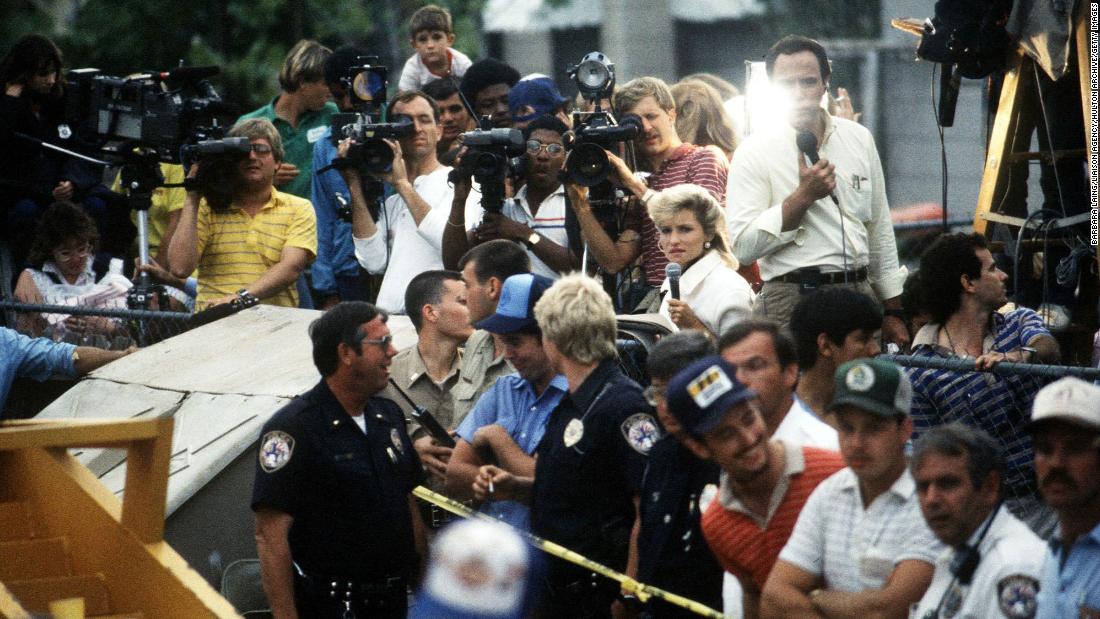Even then, the dense swarm of media attention that descended on the West Texas town to cover the family’s plight signaled a shift in the way information is gathered and shared with millions of viewers at home. Yet some things reveal themselves more fully upon reflection. Looking back 34 years later as we made a short documentary on this event, we were able to observe in starker terms the effect that Baby Jessica’s story had on a community, a nation, and the way we create and consume news today.
While other networks had rigid daytime or evening blocks of shows, CNN could share stories in real time, creating a steady stream of contact — and alongside that, a communal experience. The ongoing developments of a living, breathing baby trapped helplessly underground would help shape a 24-hour news cycle that people could connect with at any moment of the day.
We interviewed some of those who witnessed this real-life drama unfold, and according to them, it seemed people were hungry not only for more on McClure’s rescue but to feel a part of something bigger — a community connecting and engaging through the care and concern they shared for an infant in distress.
“Everybody here cared. It didn’t matter if you were the mayor or the janitor,” Joe Faulkner, a neighbor who lived through the affair, told us for the documentary. “You believed after (the rescue of McClure), if something happened to you or your child or your spouse or anybody that you knew, people were going to show up and help regardless.”
And for those miles and miles away from Midland, the real-time live images made them feel present, right there with that child and her parents in this horrific situation. People felt that by watching, they were helping, with some viewers even skipping work to watch TV until they knew she was rescued. As the days passed, the task proved harder than initially thought, and by the third day it seemed nearly impossible. Prayer and hope were all there was.
But while this uninterrupted access to the story created one experience among viewers at home, it had a different effect on some of those who were closest to the trauma, including first responder Robert O’Donnell.
O’Donnell, the paramedic who was slender enough to fit down the tunnel, failed on his first attempt to free McClure from the well’s tiny shaft. On his second attempt, the viewing audience sat riveted as they waited for him to return. It had been three days since her fall, and nobody was certain of the little girl’s condition. Then, in the darkness of the night, lit by giant floodlights, she emerged from the well swaddled in the arms of the paramedics, and every eye that had been glued to the news for days was now on O’Donnell too as he emerged from the depths. The spotlight fell on who appeared to be a simple, quiet man, and he was thrust forward into the national conversation — instantly becoming an American hero.
Fame can carry a heavy burden, and O’Donnell’s rise to fame came with a cost.
Although evening news has remained a staple, the 24-hour news cycle has become a part of our experience, ushering in the era of constantly refreshing web pages and alerts. And Baby Jessica’s rescue was so powerfully influential because, unlike other tragedies of the time, there was a chance that she would be saved. It was this hope that brought people together in a focused and all-encompassing way, creating a new kind of news experience.
It is during the rapid information turnover of today’s news cycles that the Baby Jessica story seems even more relevant; looking back, it reminds us that there are human beings on the other side of every breaking news event. After the crews pack up and head home, the story remains with the viewers, and more importantly, the subjects who lived it.






More News
Opinion | With Each Basket Steph Curry Shoots, I Inch Closer to Death
Charred bodies and screams: Witnesses describe scenes of horror at a camp.
Biden Doesn’t Want You Buying an E.V. From China. Here’s Why.